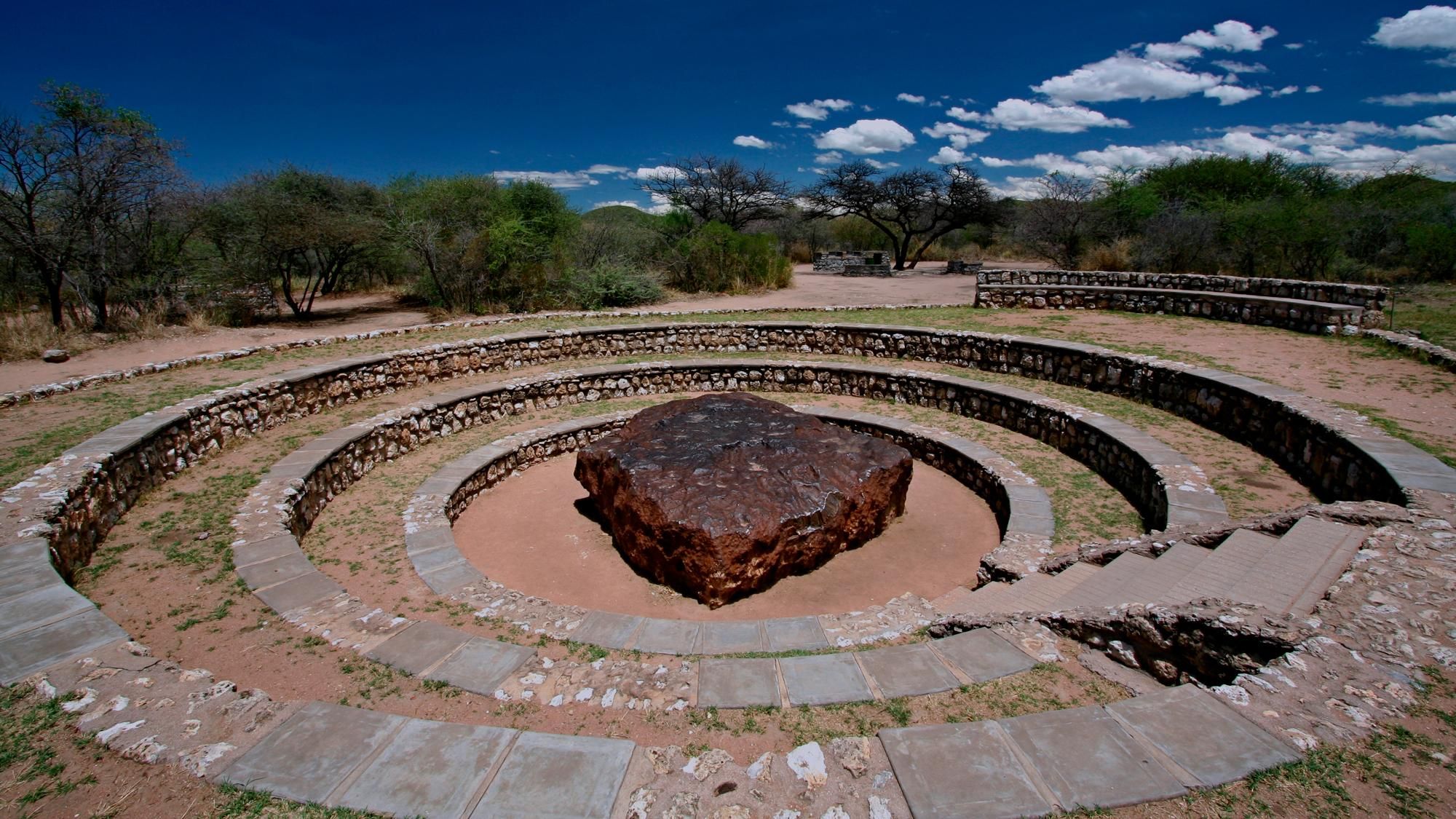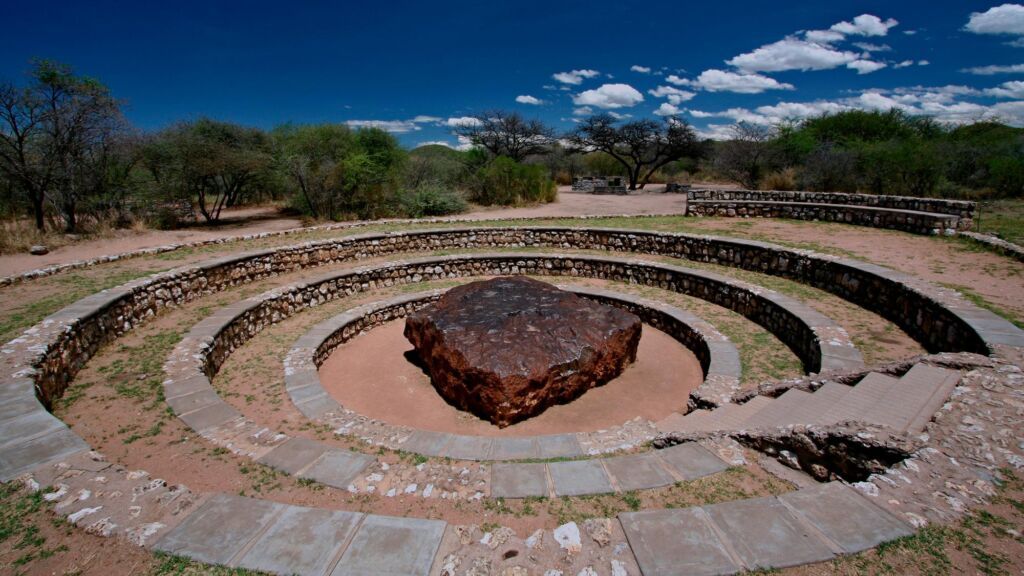Страна:
Регион:
Значение:
Время визита:
Почему Топ:
The largest iron-nickel meteorite on Earth weighs 60 tons. It fell to Earth almost 80 million years ago.
Описание:
No one knows for sure how the meteorite got to this location; it may have bounced across the Earth from the original impact site to its current location. The large cube-shaped form (about 3 by 3 metres in circumference and 1 metre high) was discovered in 1920 by farm owner Jacobus Hermanus Brits when his plow struck it. The American Museum of Natural History in New York tried to buy the meteorite in 1954 but was unable to transport it, and the site was declared a national monument in 1955, although it was not open to visitors until 1985. The area has now been landscaped with a pleasant herbaceous garden and picnic area, as well as easy access to the meteorite. It is a pleasant place to stand and contemplate the stone’s extraterrestrial origins, not to mention its incredible age: the meteorite is estimated to be between 200 and 400 million years old.
Категории:
Интерес:
Физподготовка:
Лучшее время:
Доступ:
Roads:
Emergency:
112
Info:
Safety:
Safely
Clothing:
Seasonable
Connection:
Ok


